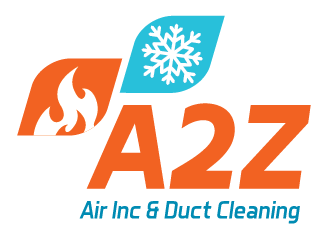
We spend a good majority of our time in our homes. In fact, the Environmental Protection Agency (EPA) has approximated being within a building makes up 90% of our days. However, the EPA also has found your indoor air can be three to five times more polluted than outside your home.
That’s because our houses are tightly sealed to boost energy efficiency. While this is great for your heating and cooling expenses, it’s not so fantastic if you’re amid the 40% of the population with respiratory allergies.
When outside ventilation is restricted, pollutants including dust and volatile organic compounds (VOCs) may get captured. Consequently, these pollutants might irritate your allergies.
You can improve your indoor air quality with clean air and routine cleaning and vacuuming. But if you’re still having issues with symptoms during the time you’re at your residence, an air purifier may be able to help.
While it can’t get rid of pollutants that have gotten trapped in your couch or carpeting, it can help freshen the air circulating across your home.
And air purification has also been scientifically proven to help lower some allergic symptoms, according to the American College of Allergy, Asthma and Immunology. It might also be useful if you or a loved one has lung issues, like emphysema or COPD.
There are two models, a portable air purifier or a whole-home air purifier. We’ll examine the differences so you can determine what’s appropriate for your house.
Whole-House Air Purifier vs. Portable Air Purifiers
A portable air purifier is for a single room. A whole-house air purifier accompanies your home comfort system to treat your entire home. Some models can work by themselves when your home comfort equipment isn’t on.
What’s the Best Air Purifier for Allergies?
Look for a purifier with a High Efficiency Particulate Air (HEPA) filter. HEPA filters are placed in hospitals and provide the best filtration you can buy, as they catch 99.97% of particles in the air.
HEPA filters are even more powerful when combined with an ultraviolet (UV) germicidal light. This mighty blend can wipe out dust, dander, pollen and mold, all of which are standard allergens. For the greatest in air purification, consider equipment that also has a carbon-based filter to decrease household odors.
Avoid buying an air purifier that creates ozone, which is the primary element in smog. The EPA advises ozone could worsen respiratory issues, even when discharged at minor concentrations.
The Allergy and Asthma Foundation of America has compiled a checklist of questions to think over when getting an air purifier.
- What can this purifier take out from the air? What doesn’t it take out?
- What’s its clean air delivery rate? (A bigger number means air will be cleaned more quickly.)
- How frequently does the filter or UV bulb need to be switched]? Can I do that by myself?
- How much do new filters or bulbs cost?
How to Lessen Seasonal Allergy Symptoms
Want to get the {top|most excellent|best] performance from your new air purification unit? The Mayo Clinic recommends doing other measures to decrease your exposure to things that can trigger seasonal allergies.
- Stay indoors and keep windows and doors closed when pollen counts are elevated.
- Have someone else trim the lawn or pull weeds, since this work can trigger symptoms. If you must do these chores alone, you might want to consider using a pollen mask. You should also shower immediately and put on clean clothes once you’re done.
- Avoid stringing up laundry outside your home.
- Run air conditioning while at home or while driving. Consider installing a high efficiency air filter in your home’s home comfort equipment.
- Equalize your house’s humidity saturation with a whole-house dehumidifier.
- Hardwood, tile or linoleum are the suggested flooring materials for reducing indoor allergens. If your home has carpet, install a HEPA filter on your vacuum cleaner.
Let Our Professionals Take Care of Your Indoor Air Quality Necessities
Prepared to progress with getting a whole-house air purifier? Give our professionals a call at 561-270-6228 or contact us online to get an appointment. We’ll help you find the best unit for your home and budget.



